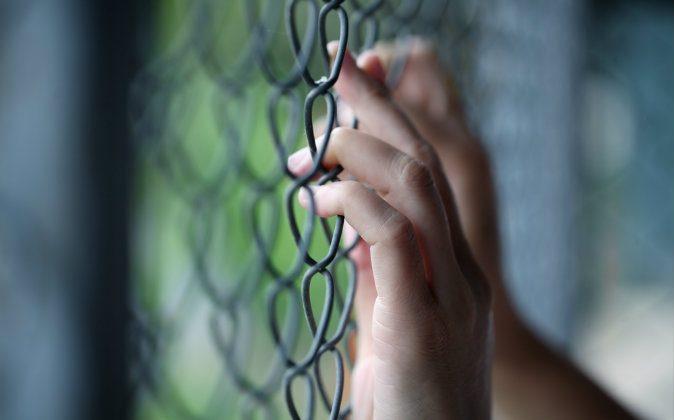WASHINGTON—Piper Kerman’s best-selling memoir, “Orange is the New Black: My Year in a Women’s Prison,” published in 2010, called attention to conditions in the U.S. women’s prisons. It has been the basis of a popular Netflix TV series, and on its third season, it was recently nominated for 12 prime-time Emmy Awards.
On Sept. 17, The Constitution Project (TCP) awarded Ms. Kerman their annual award for constitutional commentary. Virginia “Ginny” Sloan, president and founder of the TCP, said when presenting the award, “Unfortunately, it speaks volumes of our society that it takes a white woman to open the public’s eyes to the long documented problems that affect a disproportionate number of people of color, but we are grateful that it does.”
Kerman said that she hoped that people would come away after reading her book with a question, “What really happens to people behind the walls?” And she hoped that readers would have some questions to ask the people who run our prison justice system.
As a Smith College graduate from a “WASP” (white anglo-saxon Protestant) New England family, Kerman, 46, was an unlikely candidate to wind up serving 13 months in a minimum security women’s prison in Danbury, Conn. She was convicted for money laundering and drug trafficking, but not for actually selling drugs. More than 10 years before she walked through the prison gates, at the age of 24, she had made a bad decision to get involved in drug trafficking.

Right to Counsel
Kerman said that when she was writing the book, it never occurred to her that she was making a constitutional commentary, for which she was selected for the TCP award. But upon reflection she said that her book does indeed address constitutional issues of equitable justice for minorities, the right to counsel, fair sentencing, and having the basic rights of a citizen after conviction.
Kerman said she was represented by competent, private counsel. She said it makes “a big difference in outcome” to have an attorney. But “80 percent of those accused of a crime are too poor to hire an attorney,” she said.
“Far too many Americans are deprived of their Sixth Amendment rights in our courtrooms every single day,” she said.
While most Americans may not know it, the Sixth Amendment does state, “In all criminal prosecutions, the accused shall enjoy the right … to have assistance of counsel for his defense.”
After accepting the award, Kerman joined a panel to discuss topics pertaining to women in prison, including the abuse of solitary confinement, the shackling of women during pregnancy and childbirth, and sexual abuse and coercion.
Prison Reform Efforts Focused on Men, Forgot Women
Women constitute only between 5 and 7 percent of the offender population. Consequently, prison reform has focused on the men, said Kathy Dennehy, former Superintendent of MCI Framingham, the oldest continuously operated women’s prison in the U.S.
Professor and lawyer Brenda Smith, from Washington College of Law at American University, said that the typical incarcerated woman was a mother, often with an addiction problem, and involved with a man that abused her. Smith also noted that the rate of incarceration in the African American population was twice that of the white population.
Dennehy said that most large prison systems fall into “a flawed policy” of “one size fits all.” So when interest in prison conditions emerged during the 1970s (when she began her career), 1980s, and 1990s, it was skewed toward the male side, and “paid no attention to the unique needs of women,” especially pertaining to drug addiction.
Smith illustrated Dennehy’s point in the way male and female prisoners are prepared for release.
Women are often given vocational training in sewing and cleaning. “These are not jobs preparing women to be self-sufficient,” she said. Kerman said at a Midwestern prison facility she visited, the women could enter a vocational program for cleaning that they could use to transition to a janitorial job, “if they were lucky.”
By contrast, the male facility had a computer lab, where prisoners would learn how to code. There were a “wealth of activities where they were connected to the outside economy.”
Another difference between men and women is that the latter may be pregnant and give birth in prison. Smith said that state courts have ruled that shackling pregnant women is unconstitutional as a violation of the Eighth Amendment. But Smith said it is still happening because the challenges to the law are state by state.
Routine Use of Solitary Confinement
“After 10 days in solitary confinement, a healthy person will begin to rapidly, mentally, emotionally, psychologically break down,” said Kerman.
Kerman referred to her testimony on Feb. 25th, before the Senate Judiciary Committee. There she said, “The sounds of prisoners shrieking in their cells and banging their fists or heads against the walls is nothing out of the ordinary.”
“While I was in prison, I saw many women sent to the SHU [Security Housing Units] for minor infractions such as moving around a housing unit during a count, refusing an order from a correctional officer, and possession of low-level contraband … All these infractions drew at least 30 days in solitary.”
She continued, “Sometimes women are sent to the SHU immediately upon their arrival in prison because there aren’t any open beds. This is especially terrifying if a woman has never been in prison or jail before, which is often the case.”
Social and sensory deprivation in “solitary confinement is an extreme form of punishment, yet its use within women’s prisons is routine,” testified Kerman. She said at the forum that an estimated 80,000 people of the prison population are in solitary confinement.
The inmates hear stories about the SHU. Stories of people locked up alone for 24 hours in a “6-by-8-foot cell for weeks, sometimes months and even years” can evoke terror, Kerman testified. It provides a powerful motive “to keep your head down and report nothing that you see, hear, or experience for fear that you may be locked down in isolation,” she said.
Kerman mentioned a correctional officer who a prisoner she knew said was a predator. If any prisoner reported him, that prisoner would be locked up in the SHU. Thus, women won’t seek help or report abuse for fear of the SHU.
The SHU is especially hard on the mentally ill, who make up nearly three-fourths of women in prison, testified Kerman. She said: “Adherence to prison rules is simply more difficult for them …They often end up in solitary confinement as a result of behavior that is beyond their control. They are essentially punished for their illness.”
*Image of woman’s hands on a prison fence via Shutterstock





Friends Read Free